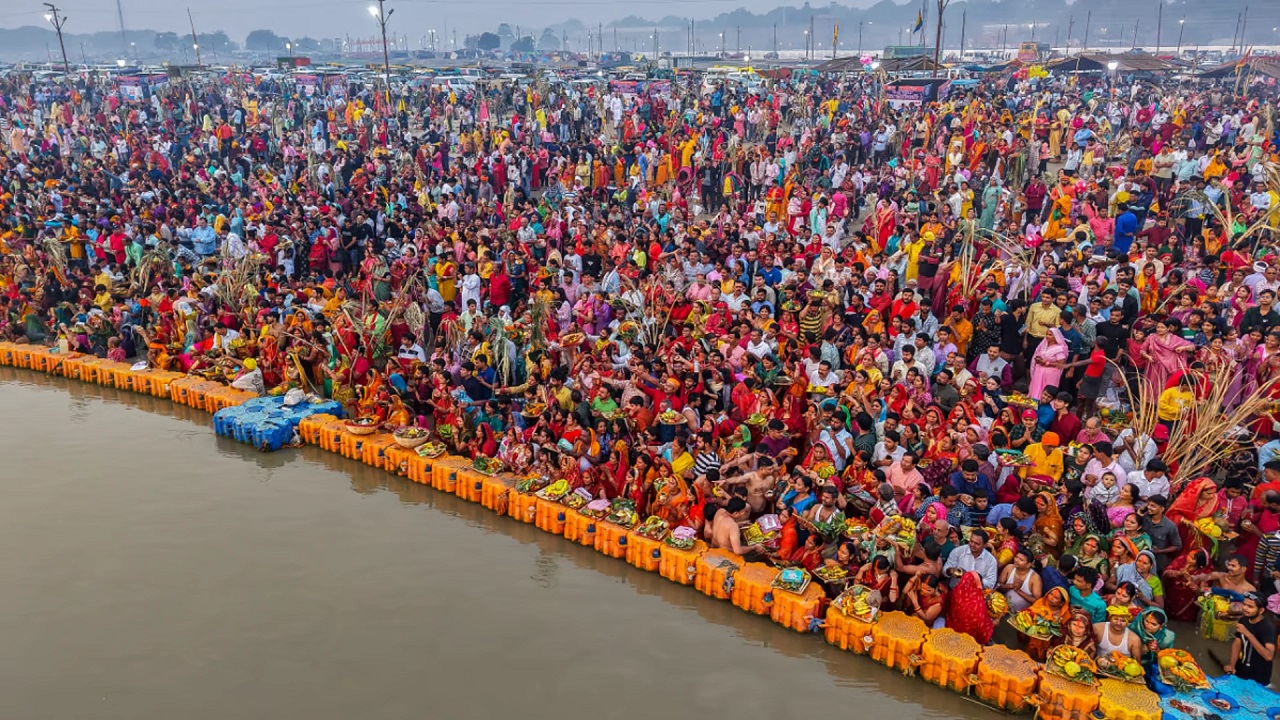Maha Kumbh Mela 2025 : A Confluence of Faith and Heritage
Context : The Maha Kumbh Mela 2025, the largest religious congregation in the world, is set to take place in Prayagraj from January 13 to February 26, 2025. This historic event, held every 12 years, symbolizes the spiritual, cultural, and social fabric of India, attracting millions of pilgrims, saints, ascetics, and tourists from across the globe.
What is Kumbh Mela?
The Kumbh Mela is a sacred Hindu festival centered around taking holy dips in the confluence of rivers believed to cleanse sins and lead to salvation. It rotates between four sites: Prayagraj (Uttar Pradesh), Haridwar (Uttarakhand), Nashik (Maharashtra), and Ujjain (Madhya Pradesh).
Four Types of Kumbh Melas
- Maha Kumbh Mela: Held every 12 years in Prayagraj, marking the culmination of a 12-year cycle.
- Purna Kumbh Mela: Celebrated every 12 years at the other three locations.
- Ardh Kumbh Mela: Held every 6 years in Prayagraj and Haridwar.
- Magh Mela: An annual event in Prayagraj during the Hindu month of Magha (January-February).
Historical and Mythological Origins
Mythological Significance
The origins of the Kumbh Mela lie in the legend of the Samudra Manthan (Churning of the Ocean), where gods and demons sought the amrit (nectar of immortality). When the nectar was retrieved, Lord Vishnu, in the guise of Mohini, carried the pot (kumbh). A tussle ensued, and four drops of nectar fell at Prayagraj, Haridwar, Nashik, and Ujjain, making these sites sacred.
Historical Evolution
- Ancient Period: References to Kumbh Mela date back to ancient Hindu scriptures such as the Puranas. The event gained prominence during the reign of Harshavardhana (7th century CE).
- Medieval Period: Adi Shankaracharya institutionalized the gathering of saints and ascetics at the Kumbh Mela.
- British Era: The British organized the festival for crowd management and sanitation. However, pilgrim taxes imposed by the British sparked resistance.
- Post-Independence Era: The first Maha Kumbh in independent India was in 1954. Since then, the festival has grown exponentially in scale and global attention.
Significance of Prayagraj in the Kumbh Mela
Spiritual Importance
Prayagraj, known as the “Tirtharaj” (king of pilgrimage sites), is home to the Triveni Sangam, the confluence of the rivers Ganga, Yamuna, and the mythical Saraswati. This sacred confluence is believed to hold unparalleled purifying power, making it the focal point of the Maha Kumbh Mela.
Cultural Heritage
Prayagraj has been a center of learning, spirituality, and cultural exchange for centuries. Its association with renowned figures like Akbar and its prominence in Hindu scriptures amplify its significance.
The Role of Akharas in Kumbh Mela
What are Akharas?
Akharas are monastic organizations or sects of Hindu ascetics and saints. They are an integral part of the Kumbh Mela, serving as custodians of Hindu spirituality, tradition, and culture. There are 13 main akharas, classified into three categories:
- Shaivite Akharas: Worshippers of Lord Shiva. Examples include Juna, Niranjani, and Mahanirvani.
- Vaishnavite Akharas: Devotees of Lord Vishnu, such as Nirmohi, Digambar, and Nirvani.
- Udasin Akharas: Followers of Guru Shankaracharya’s philosophy.
Processions and Rituals
-
Shahi Snan (Royal Bath):
- The most significant ritual, where saints and ascetics of the Akharas, led by Naga Sadhus, take a ceremonial dip in the Sangam.
- Naga Sadhus, known for their ash-covered bodies and renunciation of worldly possessions, symbolize spiritual purity and detachment.
-
Role in the Festival:
- Each Akhara has its own camp, where they conduct discourses, rituals, and public blessings.
- The inclusion of the Kinnar Akhara (transgender sect) in recent years reflects the inclusivity of the event.
Rituals and Practices at the Maha Kumbh Mela
-
Holy Dip in the Sangam:
- Devotees believe that bathing in the confluence on auspicious days cleanses sins and helps attain moksha (salvation).
-
Spiritual Discourses:
- Renowned saints and spiritual leaders deliver sermons on Vedic knowledge, philosophy, and self-realization.
-
Devotional Music and Dance:
- Traditional music, bhajans, and dance performances create a spiritual ambiance.
Maha Kumbh Mela 2025: A Modern Spiritual Phenomenon
Preparations and Innovations
-
Infrastructure Development:
- Over 167 projects worth ₹5,500 crore are being implemented, including new roads, bridges, sanitation facilities, and tented accommodations.
-
Technology Integration:
- AI-powered cameras, drones, and RFID wristbands for security and crowd management.
- Multilingual chatbot “Sah’AI’yak” to assist pilgrims in 11 languages.
-
Environmental Conservation:
- Advanced sewage treatment plants and strict pollution control measures to ensure the Ganga’s cleanliness.
Challenges and Management
- Overcrowding: Managing millions of attendees is a logistical challenge requiring meticulous planning.
- Safety and Security: AI-based surveillance, drones, and thousands of security personnel will ensure a safe experience.
- Misinformation: Social media influencers and students will counter fake news to prevent panic or chaos.
Impact of the Maha Kumbh Mela
-
Spiritual and Cultural Impact:
- The event fosters a sense of unity, devotion, and cultural pride, showcasing India’s rich heritage to the world.
-
Economic Benefits:
- Tourism and local businesses thrive, creating employment opportunities and boosting the regional economy.
-
Global Attention:
- The Maha Kumbh Mela is recognized as a UNESCO Intangible Cultural Heritage, drawing global interest and participation.
Important Dates for Maha Kumbh Mela 2025
- January 13, 2025: Makar Sankranti (First Shahi Snan)
- February 8, 2025: Mauni Amavasya (Main Shahi Snan)
- February 26, 2025: Maghi Purnima (Concluding Bath)
Conclusion
The Maha Kumbh Mela 2025 promises to be a grand celebration of India’s spiritual and cultural heritage. With its deep historical roots, mythological significance, and modern innovations, the event will serve as a confluence of tradition and progress. As millions of pilgrims and visitors converge on Prayagraj, the Maha Kumbh Mela will stand as a testament to faith, unity, and the enduring power of spirituality.



.jpg)
Comments (0)